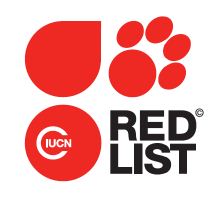VIDEO: 2012 was a busy year at Chester Zoo in Cheshire, England.
Zookeepers delivered an Asian elephant calf on Sunday, November 25, 2012. A pure Rothschild giraffe was born in October 2012 after a 14-month pregnancy. A rare baby Sumatran orangutan was born at Chester Zoo on October 19, 2012. A rare okapi foal was born on October 10, 2012 after, ironically, animal husbandy expert study the female’s poop to check hormone levels and the best romantic opportunity for the male and female to be together. Giant otters were born in September 2012.
Chester Zoo is currently operated by the North of England Zoological Society, a registered charity founded in 1934. The zoo receives no government funding, and is the most-visited wildlife attraction in Britain, and located in Upton-by-Chester, Cheshire, England.
Chester Zoo holds a large and diverse collection. At the end of 2007, over half the species at the zoo appeared on the IUCN Red List and 155 were classified as threatened species. 134 species were kept as part of a managed captive breeding program.
European Studbook (ESB)
The zoo manages the studbooks for Congo buffalo, jaguar, blue-eyed cockatoo, Madagscan tree boa, gemsbok (all ESB species), black rhinoceros, Ecuadorian Amazon parrot, Mindanao writhe-billed hornbill and Rodrigues fruit bat (all species in the European Endangered Species Program). In addition, Chester Zoo maintains 265 threatened plant species.
IUCN Red List is formally known as the IUCN RedList of Threatened Species, and is the world’s most comprehensive inventory of the global conservation status of biological species. The International Union for Conservation of Nature (IUCN) is the world’s main authority on the conservation status of species.
Regional Red Lists are produced by countries or organizations.

IUCN Red List logo.
Species are classified by the IUCN Red List into nine groups, set through criteria such as rate of decline, population size, area of geographic distribution, and degree of population and distribution fragmentation.
Extinct (EX)
No known individuals remaining.
Extinct in the Wild (EW)
Known only to survive in captivity, or as a naturalized population outside its historic range.
Critically Endangered (CR)
Extremely high risk of extinction in the wild.
Endangered (EN)
High risk of extinction in the wild.
Vulnerable (VU) – High risk of endangerment in the wild.
Near Threatened (NT)
Likely to become endangered in the near future.
Least Concern (LC)
Lowest risk. Does not qualify for a more at risk category. Widespread and abundant taxa are included in this category.
Data Deficient (DD)
Not enough data to make an assessment of its risk of extinction.
Not Evaluated (NE)
Has not yet been evaluated against the criteria.
When discussing the IUCN Red List, the official term “threatened” is a grouping of three categories: Critically Endangered, Endangered, and Vulnerable.
See also …
chesterzoo.org
The Unicorn Song – The Irish Rovers – Lyrics.
